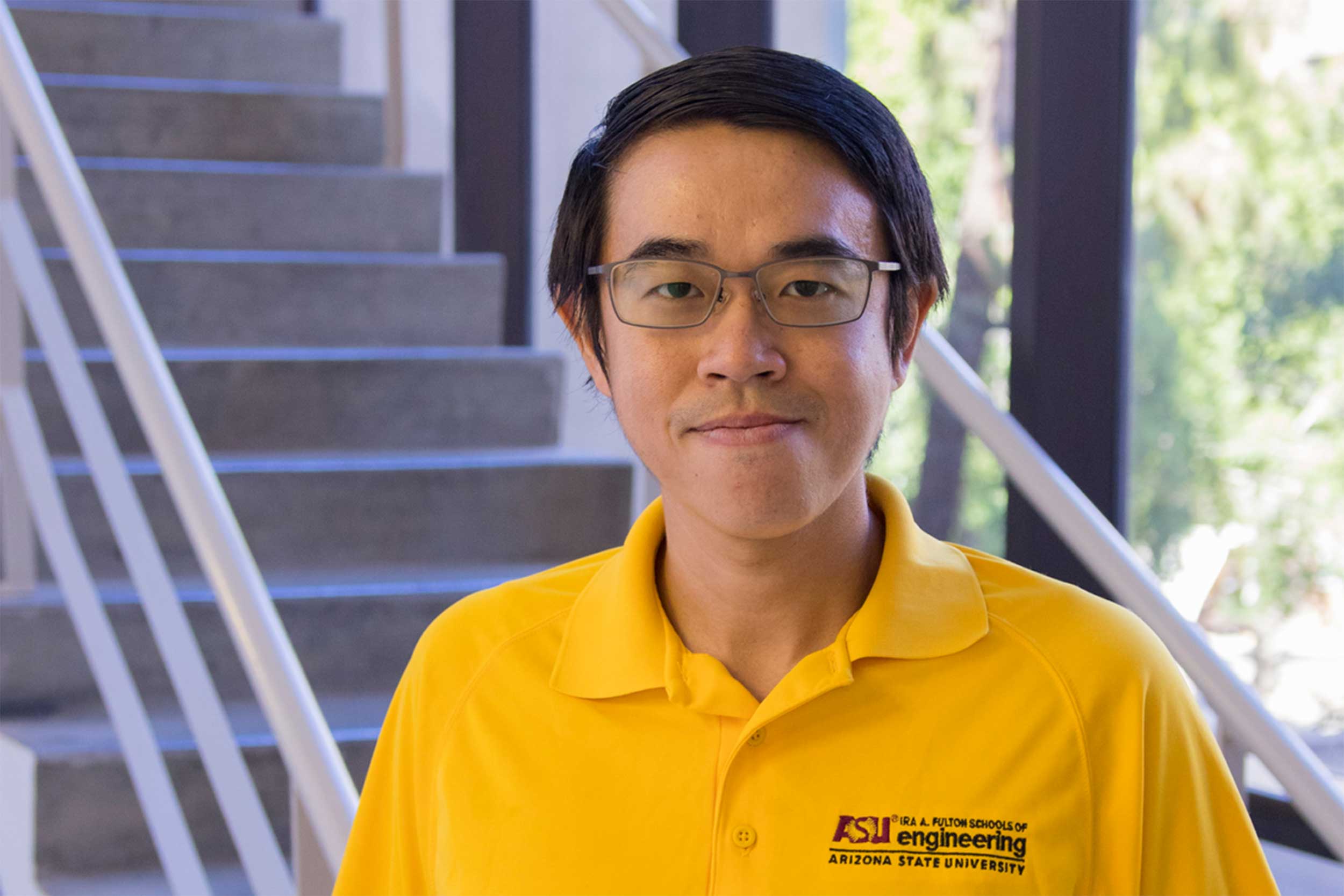ASU researcher helps robot teams get the lay of the land
![]() BY THERESA CORDON
BY THERESA CORDON
December 18, 2020

Sze Zheng Yong, an assistant professor of aerospace and mechanical engineering in the Ira A. Fulton Schools of Engineering at Arizona State University, has been selected to receive a distinguished 2020 Early Career Faculty Space Tech Research Grant from NASA.
The award is given to outstanding faculty researchers who are early in their careers and working on projects in specific high-priority areas of interest to the United States’ space program. Yong is one of three researchers selected for the coordinated multi-robots for planetary exploration track. Yong’s research will be funded up to $200,000 per year for as many as three years.
Yong is working on a new algorithm designed to coordinate multi-robot terrain estimation and exploration. Using wheeled robots or rovers, the machines will work together while coupled with a tether. The configuration will provide access to extreme terrain, allowing the robots to coordinate and assist each other while also mitigating failure possibilities.
“Think of it like a human chain used in search parties for missing people in unknown terrains,” Yong says. “Our robots will work together for the greater good.”
The proposed work has the potential to open a new class of multi-robot systems for NASA applications. Specifically, the research could enable robots to perform coordinated planning and take deliberate controlled actions to optimize both individual and team mobility, including how robots can assist one another. The helper robots would estimate terrain parameters, control motion to compensate for slippage intelligently, and manage their placement and alignment to manipulate the tether more reliably.
Looking ahead, Yong sees this research benefiting more than the exploration of a planetary or lunar surface.
“Potentially the opportunities are endless with this technology,” Yong says. “I can see practical terrestrial uses in mining, construction and other fields that involve forceful interactions between machines and the environment.”
Yong came to ASU to be a part of the thriving research community rooted in innovation. This campus-wide philosophy gives Yong access to top-notch peers within the School for Engineering of Matter, Transport and Energy, one of the six Fulton Schools, and the breadth of other ASU research faculty.
Yong coordinated with the ASU Space Technology and Science Initiative, also called NewSpace, and its director, Professor James Bell, and program manager, Scott Smas, throughout the proposal process. The center helped connect him with vital faculty members, resources from the School of Earth and Space Exploration and even industry collaborators such as Tethers Unlimited Inc., which graciously provided guidance and feedback for the proposal.
“It’s really exciting to see Yong’s research and future potential recognized through this prestigious NASA Early Career Award.” Bell says. “As the director of our ASU/NewSpace Initiative and as someone who works with NASA robots and robotic systems, seeing Yong’s ideas for coordinated multi-robot systems get implemented in space is inspiring.”
Researchers
Sze Zheng Yong
Assistant Professor
School for Engineering of Matter, Transport and Energy
Related Stories
ASU engineering student wins stellar intern award
Graduate student Janani Anand won the HP Intern-Stellar award for her work on a new technology: Wi-Fi signature profiling.
Abbas, Friesen earn elevated status among academic inventors
The National Academy of Inventors has named two Fulton Schools faculty members to the August 2020 class of NAI senior members.
Vijay Vittal: 15 years of energizing power systems engineering
Vijay Vittal is ending his tenure as director of the Power Systems Engineering Research Center after an impactful 15 years of modernizing the electric grid.
Collaboration committed to diversity in engineering
A new research internship program is the nexus of university and industry collaboration to foster greater diversity in engineering.


